Immersive hospitality takes center stage in Design Hotels Originals collection of independently owned boutique properties. These six hotels located around the globe raise the bar for art promotion and preservation, featuring innovative art programs that turn the business of the hotelier into a creative field in its own right.
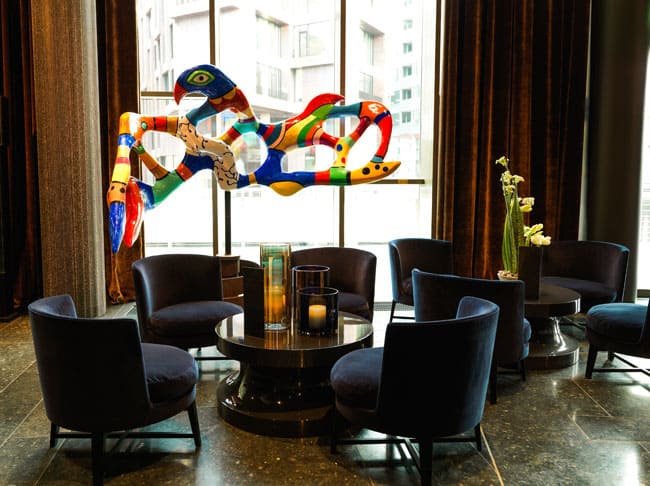
The Thief, Oslo, Norway
The waterfront district of Tjuvholmen lends this property its name, having once been an 18th century den for criminals and vagabonds known as “Thief Island.” The area is now the beating heart of Oslo’s contemporary art scene and home to several internationally renowned galleries such as the Renzo Piano-designed Astrup Fearnley Museum of Modern Art, situated directly next to the hotel. The Thief offers 119 bespoke rooms and is functionally a museum, showcasing furniture and lamps by established designers such as Tom Dixon and Boca do Lobo, along with pieces by Norwegian newcomers. The design of each room is complemented by artwork hand-picked by curator Sune Nordgren, including an Andy Warhol print in the restaurant, collages by Sir Peter Blake in the suites and animation by Julian Opie in the elevator.
“In museums and galleries the public have actively sought out art and bring with them a set of expectations. In a hotel the guests are less prepared and experience the work on other terms. I think that is incredibly exciting and challenging,” says Nordgren. “The term ‘hotel art’ has been associated with bad taste, mass production and random positioning. Redefining hotel art is about giving the guests quality experiences, causing reflection and perhaps changing their perception of reality for a brief moment,” he adds.
The hotel has a unique partnership with the Astrup Fearnley museum, which includes complimentary entry for guests and permission for the hotel to borrow signal works from the museum’s collection and exhibit them at strategic locations throughout the property. The Thief has five boardrooms and can organize meetings for 2-50 people, but larger groups can be hosted at the museum itself.
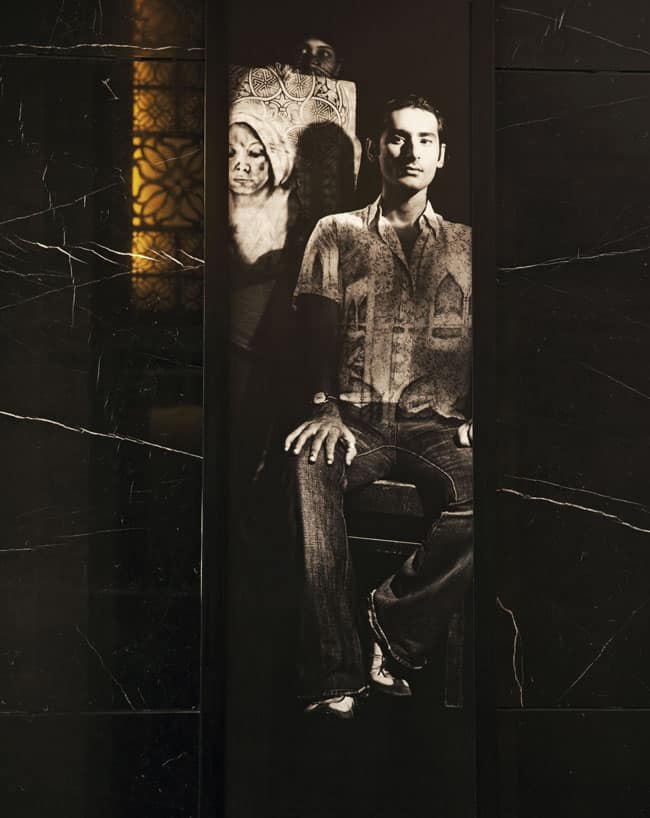
Anya Hotel, Gurgaon, India
In Sanskrit, the word “Anya” translates as “different,” and the 117-room Anya Hotel located in the vibrant commercial hub of Gurgaon effortlessly lives up to its name. The hotel is home to one of the most impressive private art collections in India, featuring works by contemporary Indian masters such as Bose Krishnamachari and Chittrovanu Mazumdar, and commissioned work by Remen Chopra. Its owner, Misha Vadera, has been an art collector for more than 30 years, and it is this creative passion that shapes the hotel’s aesthetic of “luxury with an undercurrent of minimalism.” The distinctive crescent-shaped building, designed by architect Alfaz Miller, contributes to this effect as its structure means that every guest room differs in size and form; international music zones situated throughout the hotel set a distinct tone with a selection of jazz, electronic and Indian classical compositions. International cuisine is on the menu, with Gurgaon’s only Spanish tapas bar offering small plates, as well as a patisserie located in the lobby and an outside beer garden serving a variety of Indian and international beers. For meetings, the hotel has a large hall that can accommodate 280 theater and 150 classroom, and can be divided into two separate spaces, plus a pre-function area with an in-built bar. If golf is your group’s passion, the 18-hole DLF Golf and Country Club, designed by Arnold Palmer, is located within a short distance of the property.
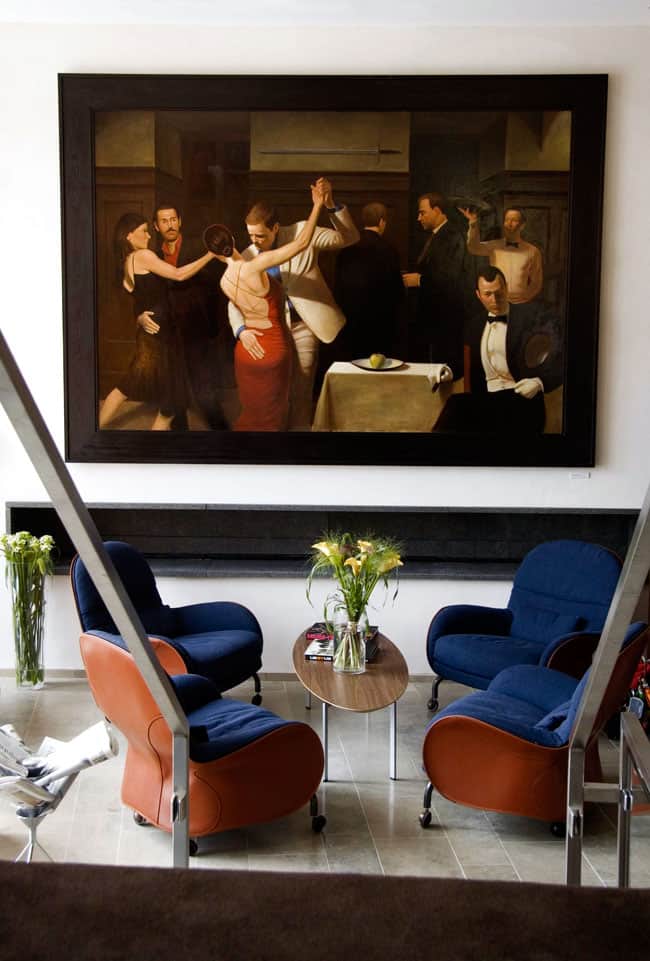
Avalon Hotel, Gothenburg, Sweden
The ancient port city of Gothenburg houses the ultramodern design of the Avalon Hotel, a 101-room complex that combines jutting angles, a mix of low and high ceilings and minimalist Scandinavian style. Its interiors have been designed along Feng Shui principles and incorporate sinuous shapes, rounded corners and rippling water effects to conjure a sense of balance, comfort and harmony throughout. The Swedish design aesthetic provides a perfect canvas for the extensive collection of contemporary Scandinavian art housed within, and it leads the way in the Gothenburg art scene with its annual Avalon Art Evening, in which a new addition to the hotel’s collection is unveiled. Now in its eighth year, the event has previously featured the works of acclaimed artists such as Ernst Billgren, Jan Håfström and Lars Lerin. It offers two meeting rooms which can be combined to accommodate 8 to 38 people, and it is also possible to rent the entire penthouse, roof terrace and rooftop swimming pool which offers panoramic views of Gothenburg, ideal for larger events or cocktail receptions.
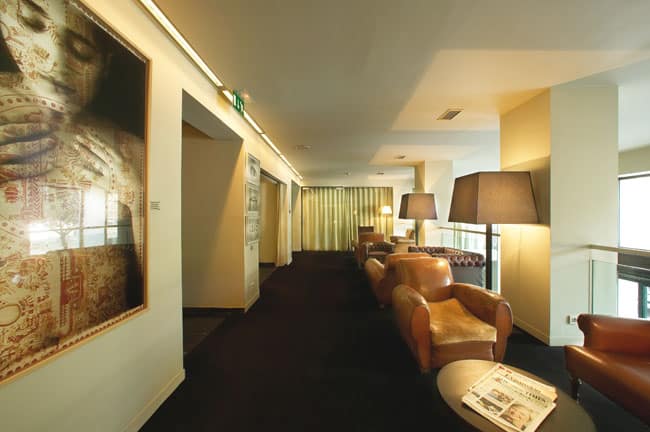
Hotel Miró, Bilbao, Spain
Situated a stone’s throw from the Bilbao Museum of Fine Arts and the Guggenheim Museum, the 50-room Hotel Miró is unsurprisingly a favorite haunt for luminaries of the international art world. The 10-story hotel has been designed by, and named after, fashion designer Antonio Miró, renowned as Spain’s answer to Calvin Klein, and the interiors reflect the sleek, sober and simple style that have made his creations a favorite on the catwalks. The hotel features a private collection of more than 50 contemporary photographs by Spanish and international artists such as Concha Prada, Ruud Van Empel and Alberto Peral. In particular, its lobby features the controversial photograph “Shiva” by Bilbao-born artist Ana Laura Aláez. Hotel Miró can accommodate groups of up to 35 people, but the whole hotel can be privatized for larger events. It is located in walking distance of the Old Quarter (Casco Viejo) and is ideally situated for access to the city’s many museums, restaurants and shopping areas.
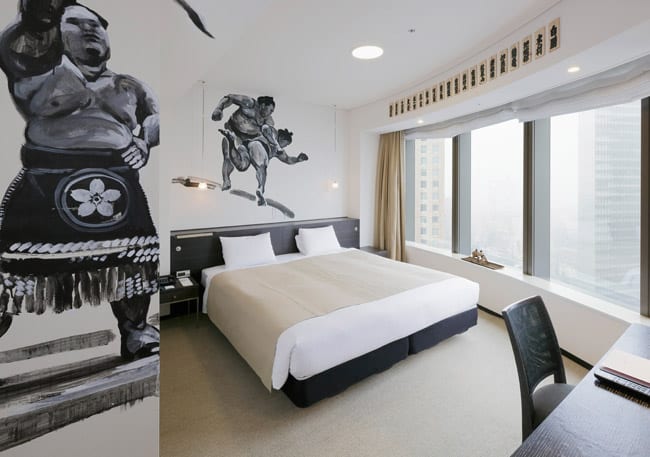
Park Hotel Tokyo, Japan
Spanning the top ten floors of the towering triangular Shiodome Media Tower in downtown Tokyo, the 273-room Park Hotel offers a soothing oasis of nature and art amid the bustling hub of business and culture. The ten-story Atrium is filled with trees and greenery, and its glass roof bathes the space in warming sunlight. It houses a quarterly exhibition called ‘ART Colours’ – where every three months Japanese artists are invited to capture the beauty of the seasons through the medium of both traditional and multi-media art. The property also features an ‘Artist in Hotel’ program, where local artists are offered a residency in one of the hotel rooms and invited to use the walls as a canvas for their work.
Room concepts range include the Zen room by Seihaku Akiba, intended as “a room where people can find tranquility in an urban setting,” according to the artist. Bold Japanese characters have been inscribed on the walls in the style of iainuki, the art of quick sword drawing; and tatami mats are placed in the room for sitting meditation. The Dragon room by Kiyoko Abe depicts a majestic dragon floating across the four walls and symbolizing the energy of nature. “I want guests who stay in this room with its wonderful view, to view the panorama of modern Japan beneath their eyes, while at the same time realizing that people have lived, and are now living, in the raw world of Nature,” says Abe.
The hotel offers two meeting rooms, a business center, personal fitness gym and Thann Sanctuary spa. It supports the ‘Creative Tokyo’ initiative, which is part of the ‘Cool Japan Strategy Program’ promoted by the Ministry of Economy, Trade and Industry to share Japanese culture across the globe.
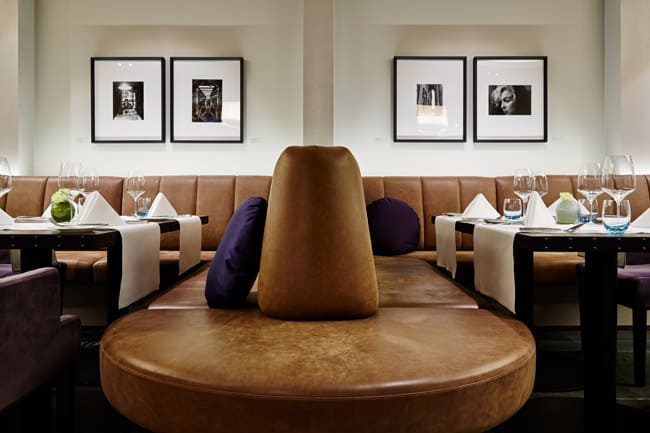
Hotel zum Löwen, Duderstadt, Germany
Housed in a timber-framed 17th century building in the heart of medieval Duderstadt, the 54-room Hotel zum Löwen combines modern interior design with the warmth of a traditional German guesthouse. It is the work of local businessman and art collector Hans Georg Näder, who has filled the property with pieces from his enviable private collection. Polaroids taken by Andy Warhol, which the pop art pioneer used as the basis for his iconic portraits, decorate the walls of the restaurant and fireplace room. Atmospheric photography of industrial buildings and timbered houses by Bernd and Hilla Becher, founders of the Düsseldorf School, are also on show – along with work by contemporary photographers that has been specially commissioned for the Löwen. Näder has extended the art concept of the hotel by opening a neighboring gallery called the Kunsthalle HGN, which showcases further installations and photographs from his collection.
“Art has truly gripped me – though the draw was initially subtle,” says Näder. “The collection mirrors my development. Important works in my collection come from strong artistic personalities, such as Neo Rauch, Helmut Newton, Thomas Ruff and Götz Diergarten.”
The hotel’s three meeting rooms can be combined to accommodate up to 70 people theater style. It also features a resort quality spa with steam room, pool and salt sauna; along with a daylight-drenched winter garden, vaulted wine cellars offering a hand-picked wine list, and an in-house microbrewery overseen by an acclaimed local Braumeister.




